How to form a tomato bush in a greenhouse, depending on the variety
An amazing tomato plant in its historical homeland, Peru, is capable of growing like a perennial, releasing up to 150 side shoots. More than 200 full-fledged fruits are harvested from such colossi per year. Unfortunately, the climatic conditions of our country do not allow such a luxury, therefore, in order to obtain a decent harvest, summer residents solve a difficult task - the formation of tomatoes. This is especially true in a greenhouse.
Basic schemes and principles for the formation of tomatoes
For the formation of bushes of greenhouse tomatoes, three schemes are successfully used - in one, two or three stems. The choice is determined by several factors - the size of the bush, the timing of fruiting, the growing conditions (open ground or greenhouse). For greenhouse cultivation, the first two options are recommended, and three-stem bushes are suitable only for open ground if the distance between the plants is large enough.
To create a bush that can give the crop of the desired quality, two methods are used - pinching (pinching) and pinching.
Grasshopping (removal of lateral offspring) is necessary for the correct redistribution of nutrition to all parts of the plant. With its help, the number of ripening tomatoes is also normalized, which determines their size and nutritional value. In addition, this procedure makes tomato bushes healthier: light and air become more accessible to them, and this prevents the development of most tomato diseases in greenhouses.
Pinching is carried out 10-15 days after planting seedlings, repeat regularly every week.
So that instead of the broken axillary sprouts new ones do not appear, hemp 2-3 cm high is left.
Pinching is an agrotechnical measure that limits the growth of the main stem and stimulates the formation of fruitful lateral shoots. Also, its benefit is that the vegetative mass does not grow, which takes away nutrients from already ripening fruits.
The normalization of the number of leaves is also referred to as formative activities. However, there is no consensus on how many leaves a plant needs. Some people like the leafless stems on which tomatoes ripen in colorful garlands. Others believe that in this way they reduce the amount of nutrients supplied to plants from the air. The only thing that can be said for sure is that the lower leaves create an obstacle to air exchange, which increases the humidity under the bushes and creates a favorable environment for the development of diseases.
How to shape tomatoes into one stem?
The name of the scheme speaks for itself - the plant is left with the main shoot, getting rid of all possible lateral ones. Two options are distinguished here: classic and stepped.
The stepchildren break off when their length is 5-6 cm. At this time, even a novice summer resident will distinguish a flower brush and a leafy shoot.
- The classic version is intended for determinate tall varieties. This is an excellent solution for greenhouses where it is convenient to tie tomatoes to trellises. Processing allows you to extend the period of fruiting until October and longer if heating of the structure is provided. Around the second half of August, the main stem is pinched so that the set fruits have time to ripen. The pinching is carried out so that a couple of leaves remain above the upper fruit brush.
- The staggered scheme is used to form tall and indeterminate tomatoes. The principle itself remains the same, but a strong axillary shoot is left at the level of the middle of the main stem. After some time, when a flower brush is formed on the stepson, the main trunk is pinched. If the lateral shoot is actively growing, the procedure is repeated with it. The scheme is more suitable for bushes growing outdoors.
Often, medium-sized varieties are formed into one stem, increasing their yield to the level of tall ones.
Sometimes, if the stepson quickly forms a flower brush, he is left with subsequent pinching two leaves after the brush. Such an intermediate, between the classic and stepped, option somewhat slows down the growth of the main stem, which summer residents willingly use.
Low-growing and early-maturing standard varieties usually do not need to be formed, but they are often stepchild to accelerate the ripening of tomatoes.
How to form tomatoes into two stalks - diagram
For determinant tall varieties, a two-stem scheme is often used. A strong stepson is chosen over the 4th or 5th brush, they allow him to grow and develop further. It is better if it is located just above the upper flowers. He will play the role of a replacement trunk, so he is regularly stepson. When the main stem stops growing, it is pinched. If its development continues, another group of fruits is allowed to form on it, then pinched.
To protect the bush from overload, the rule is observed: there should be two fruit clusters above the reserve shoot, otherwise it will develop slowly and will not be able to fulfill its intended function.
Three-stem scheme
Tomato bushes with three stems are grown more often in open beds: they need more space, which is difficult to ensure with greenhouse cultivation. To create the second and third stems, lateral shoots are left from the axils of the leaves under the first brush and immediately above it.
It is reasonable to form such bushes if the distance between them is more than 60 cm.
Features of the formation of indeterminate tomatoes
The indeterminants are usually formed according to a 1-2-stem pattern. The second option is more acceptable for the southern regions, where tomatoes bear fruit without shelter before frost. For unheated greenhouses, the single-stem method is characteristic in both its versions - the classic and the stepped one.
Since in heated greenhouses the desired mode can be maintained indefinitely, one- and two-stem schemes are used for bushes. The second trunk is formed from a stepson that has grown in the leaf axil under the first fruit brush. Interestingly, the tops of the indeterminants are often allowed to grow without restriction. A common technique is to tie up the bush for the last time at a two-meter height, after which the stems that continue to grow tilt down. It turns out a bizarre liana, hung with bright tomatoes.
Indents growing in unheated greenhouses are deprived of such luxury, they pinch the top at a level of 180-200 cm so that all the fruits have time to fill up before the cold weather.
Features of the formation of cherry tomatoes
Small-fruited cherry trees are not particularly picky about the amount of lighting, therefore, quite often, when cultivating such varieties, they do not find it difficult to form bushes in the open field. Only the following rules are observed:
- do not allow thickening of the lower part of the stem;
- remove unpromising shoots;
- remove leaves blocking sunlight for ripening tomatoes.
With greenhouse cultivation, formation is taken more seriously:
- Low varieties of cherry form similarly to low-growing tomatoes or do not do it at all, especially in the "kids" balcony and potted varieties.
- For tall, as well as for large-fruited, use similar schemes - 1, 2, 3 stems.
- Indeterminate small-fruited tomatoes in a greenhouse bear fruit well on two, three and even four stems.
- Cherry tomatoes are grown according to the same rules and principles as large-fruited varieties.
The formation of tomato bushes growing in protected ground does not depend on what material the structure is made of. In a polycarbonate greenhouse, growing crops and caring for it is carried out according to the same rules as in film or glazed ones. Correctly formed tomato bushes and their timely garter will provide the summer resident with a harvest corresponding to the efforts made.
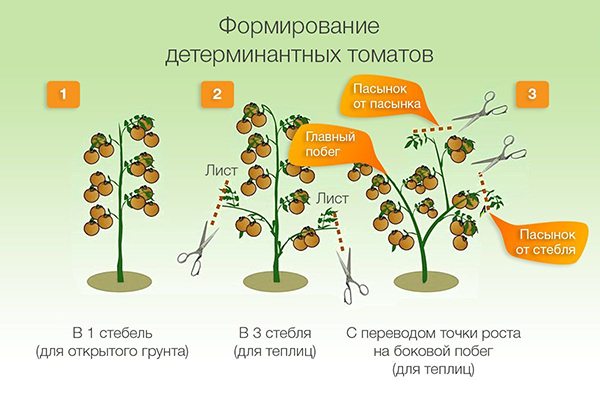
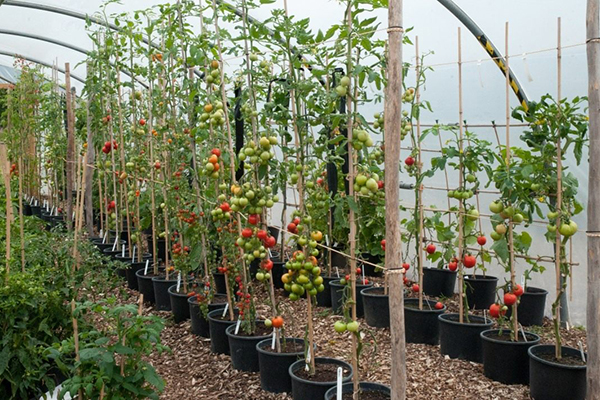
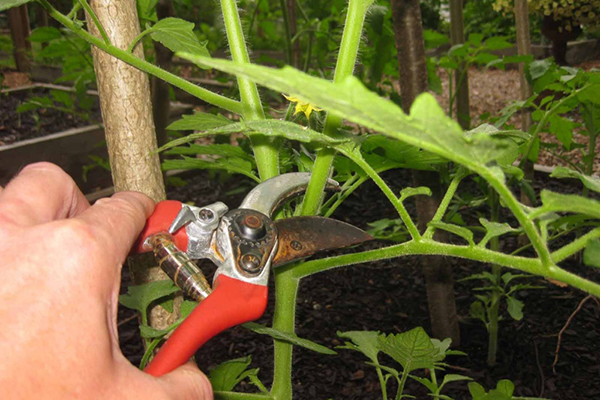
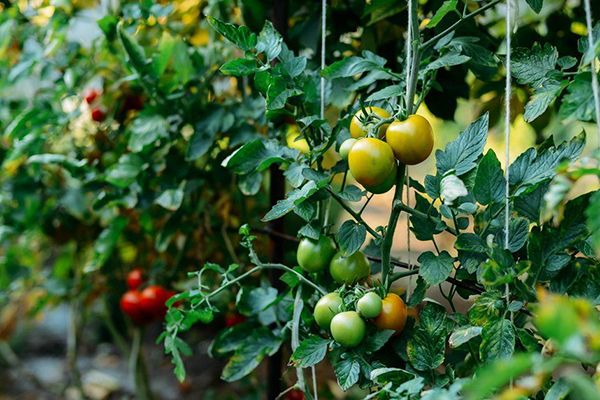
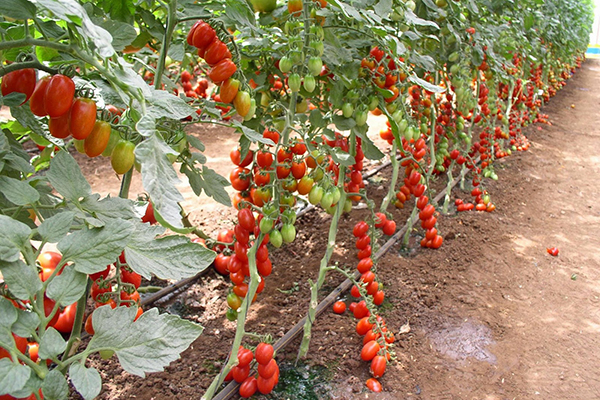
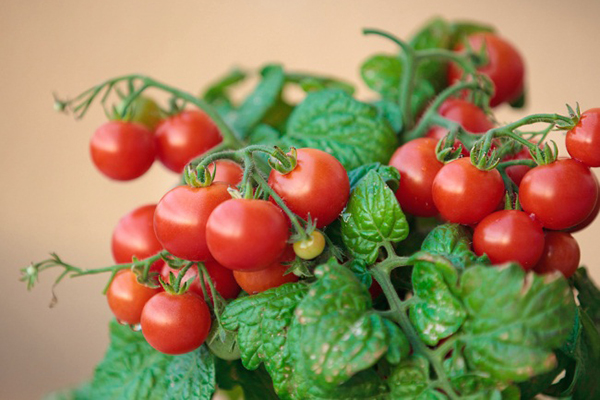

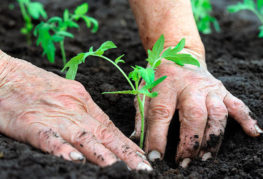

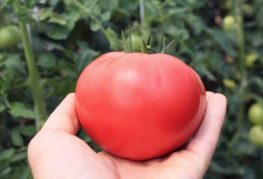
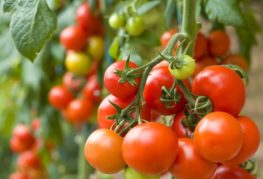

and will be published shortly.